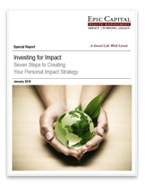Market Update: What You Should Know About the Latest Fed Action
Feb 3, 2023

What a Difference a Year Makes
A year ago today, the federal funds rate was close to zero, consumer price inflation reached 7.9%, and yet the 10-year Treasury yield was 1.79%. What a difference a year makes. Inflation clearly had more upside and from this vantage point, the Federal Reserve (Fed) was late in pursuing price stability.
As expected, the Federal Open Market Committee (FOMC) raised target rates yesterday by just 0.25% to a range of 4.50%–4.75%. After raising rates at the fastest clip since the 1980s, today’s fed funds rate is the highest since 2007. The rapid rise in rates has indeed tamed inflation. After reaching a peak last year, inflation rates have clearly decelerated as tighter financial conditions and better supply chains have both reversed the inflation trend.
Fed Talks about Ongoing Increases
According to yesterday’s statement, the FOMC is comfortable accepting that inflation has eased, which is a micro-step toward a pause later this year. The FOMC statement reveals the Committee’s commitment to “ongoing increases in the target range” so the end of the hiking campaign will not likely happen until the second quarter. Investors should expect the Committee to raise rates at least one more time.
As shown in the chart below, the fed funds upper bound is higher than the latest reading on the core deflator, the first time since the beginning of the global pandemic. As inflation cools and the economy slows, the Committee’s approach to the dual mandate will evolve and that evolution has already started with this recent decision. When investors compare the current statement with last year’s, investors should conclude the days of any hikes greater than 25 basis points (0.25%) are over for this cycle. It seems the Committee no longer worries about the “pace” but is now focused on the “extent” of future increases.
Conclusion
After the latest decision, the fed funds upper bound is higher than the latest reading on the core deflator. Inflation is poised to ease further in the coming months, which will give the Fed some leeway to end its rate hiking campaign. The FOMC will likely hike rates again by 0.25% on March 22, but the debate builds about potential decisions made on May 3 (our best guess at this point is the Fed pauses in May). And most importantly, investors should remember that history shows that markets respond favorably after the end of a rate hiking cycle.
For additional insights and resources, be sure to sign up for our Weekly Market Commentary, follow our YouTube channel where we regularly post our Epic Market Minute videos, follow us on LinkedIn, or like us on Facebook. And as always, please don’t hesitate to reach out to a dedicated service professional at Epic Capital.
IMPORTANT DISCLOSURES This material is for general information only and is not intended to provide specific advice or recommendations for any individual. There is no assurance that the views or strategies discussed are suitable for all investors. To determine which investment(s) may be appropriate for you, please consult your financial professional prior to investing. Investing involves risks including possible loss of principal. No investment strategy or risk management technique can guarantee return or eliminate risk in all market environments. For more information on the risks associated with the strategies and product types discussed please visit https://lplresearch.com/Risks References to markets, asset classes, and sectors are generally regarding the corresponding market index. Indexes are unmanaged statistical composites and cannot be invested into directly. Index performance is not indicative of the performance of any investment and do not reflect fees, expenses, or sales charges. All performance referenced is historical and is no guarantee of future results. Unless otherwise stated LPL Financial and the third party persons and firms mentioned are not affiliates of each other and make no representation with respect to each other. Any company names noted herein are for educational purposes only and not an indication of trading intent or a solicitation of their products or services. All information is believed to be from reliable sources; however, LPL Financial makes no representation as to its completeness or accuracy. Securities and advisory services offered through LPL Financial, a registered investment advisor and broker-dealer. Member FINRA/SIPC.
Tags: Current Events, financial advisor charlotte nc, Investing, Investment Planning
More Insights
It seems like we just can’t stop talking about the Federal Reserve (Fed). After an aggressive rate hiking campaign that we think ended last year, markets were expecting the Fed to start cutting interest rates as early as next month. But withan economy that continues to surprise to the upside, along with inflationary pressures that … Continue reading “Market Update – The Patient Pause”
A thoughtful retirement strategy may help you pursue your many retirement goals. That strategy must consider many factors, and here are just a few: your income needs, the order of your withdrawals from taxable and tax-advantaged retirement accounts, the income tax implications of those withdrawals, and sequence of return risk.
Losing a spouse is a stressful transition. And the added pressure of having to settle the estate and organize finances can be overwhelming. Fortunately, there are steps you can take to make dealing with these matters less difficult.
Ever hear of critical illness insurance? This isn’t standard-issue disability insurance, but a cousin of sorts. With people living longer, it is a risk management option entering more people’s lives.
Following Iran’s missile and drone strikes on Israel over the weekend and the apparent escalation likely in any Israeli response, stocks fell sharply during Monday’s trading session. We examine the latest developments in the Middle East conflict, how stocks have reacted historically to geopolitical events, and the possible impact on markets moving forward.
Services
Epic Capital provides the following comprehensive financial planning and investment management services: Learn More >



 Top of Page
Top of Page











